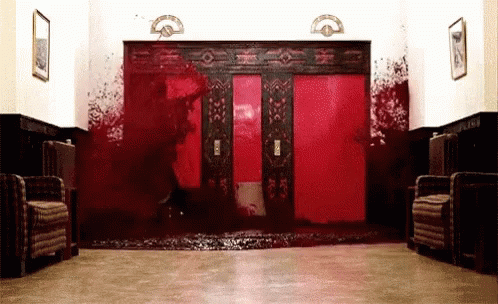The Saturation of 'The Shining'
Trying to find the logic behind the valuation of art is a fruitless endeavour. There's never been a clear cut answer or guide. For some, there's a historical or cultural values, for others it's down to the meaning or interpreted meaning. When it comes to the monetary value it is often up to a small number of curators using their 'expertise' to decide on a value. It could be attributed to the demand for the art, simply how much a person would be willing to pay.
Digital artist Beeple saw a piece named 'The First 500 Days' sell at action for $69million. Although there is not a physical copy to be possessed or displayed by the buyers, and the work is published online, their ownership is confirmed by a unique piece of code called a non-fungible token. These NFTs mean that they own the work and control the license and right to sell the work. In cases such as these the very definition of art is negligible and the perceived value so unexpectedly high that the entire process feels like madness.
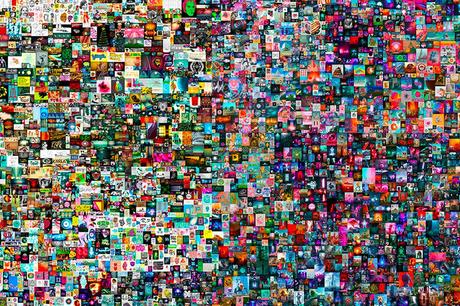
Another angle to take on the value of art is through its cultural impact. The success of the art could be measured by how well known in becomes and how much it shapes trends in and around art. This is easily applied to cinema, being a modern form of art that has gone through many long- and short term trends. When a movie becomes an essential part of the art landscape we not only see it influences other texts, but direct parodies, spoofs and references. Eventually a movie might become so ingrained in our culture that you are likely to see it recreated to some degree several times before having seen the original.
Becoming a cultural artefact is a double-edged sword, however. Once a film has become a recognisable piece of work and it's visuals are used as filmic shorthand in addition to being parodied it runs the risks of being cheapened through over-exposure. It's not even a matter of the initial impact of the being watered down over time, but the impact of a first viewing being undercut through having seen poor copies of it being filtered through children's television perplexingly parodying R Rated movies. It's difficult to appreciate how thoroughly Marlon Brando commands the screen in The Godfather if you've already seen the routine done in Zootopia, Rugrats, The Simpsons, Trolls, Hey Arnold and more.
Stanley Kubrick's The Shining appears to reached the point in the cycle where it has become common reference point for all manner of genres and styles of film and television. Now that the classic horror film is being visually referenced in children's animation it may be impossible to experience the most memorable scenes of the movie in the context of their own story. With every reiteration in pop culture we lose something of the original for all future audiences.
To break down the recent history of the film, we have to first look at the second attempt at an adaptation. It's common knowledge that author Stephen King hated Kubrick's adaptation, calling it a cold film that failed to understand the characters. It will always be a matter of debate as to whether the book or the film is the better version of the story (it's the film), but King's disappointment was the driving force behind a miniseries remake. As much as it strived to be its own thing, the miniseries was made as a response to Kubrick's film and will always live in its shadow. In spite of initially strong reviews, it's the weaker film in every regard with novel purists being the only ones still singing its praises. In this one instance the presence of another film only elevates the original, giving credence to Kubrick's changes.
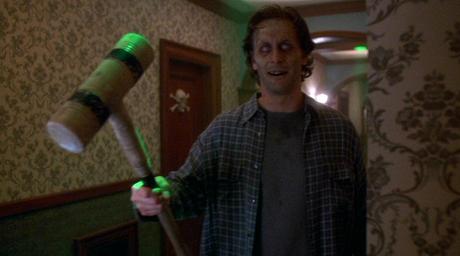
Since this point, and gaining speed during the last ten years, the presence of The Shining in popular culture has only become more prominent. Getting a parody on The Simpsons Treehouse of Horror is a matter of course for all distinctive scary movies. Jack Nicholson's "heeeeeere's Johnny!" is better know for its use in The Shining than by Johnny Carson, and the Grady Twins have been reduced down to creepy shorthand. That's not going to have any real impact of the movie's position in modern culture beyond indicating that it's recognisable.
Having made The Shining one of the most recognisable horror properties in modern pop culture, the saturation and cheapening of the brand began in earnest. One of the first odd appearances of The Shining came in the form of the documentary Room 237. This film is a collection of radical interpretations of the film, claiming they have identified clues and secrets that reveal the 'real' meaning of the movie. It's an unusual offering, listening to people claiming that during the opening scene the face of director Stanley Kubrick is formed by the clouds drifting across the sky. On its own, the film is a series of disillusioned fans looking to at further meaning to the text. As part of a larger canon it's one of many additional texts that cheapen the original by association.
Running a close second to Room 237 is the appearance of The Shining in Steven Spielberg's adaptation to Earnest Cline's ode to 80s culture Ready Player One. Taking place largely in a virtual reality platform called the OASIS, the characters of Ready Player One drive cars, wear clothes and live in settings from the most recognisable films and games from the 80s and 90s. In the novel they reenact such movies as WarGames, whilst in the movie they spend an extended period of time trying to survive the Overlook Hotel. Allegedly the early drafts for the film featured Blade Runner, but as Blade Runner 2049 was in production this idea was nixed.
But Spielberg was old friends with the late Kubrick and decided to pay tribute to his work. He had attempted this with AI: Artificial Intelligence, to mixed results, and did a genuinely amazing job in recreated The Shining 's visual style and integrating his sci-fi elements into it. The whole sequence was fun to watch.
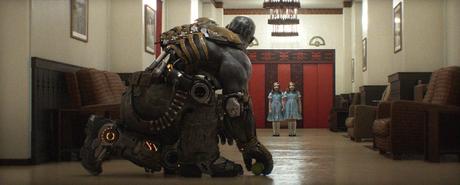
What is also did was neuter Kubrick's classic. For all the technical ingenuity involved and the happy pangs of nostalgia it's a really odd depiction of the movie. It's clear they were limited in what they could include, with Jack Torrence being noticeably absent and the lady from the bathtub becoming the antagonist. Already we're dealing with a reduced Shining experience, with everything being boiled down to the most iconic, recognisable elements. Big, disembodied axes swinging through a snowy maze, Grady Twins wondering around and bloody elevators. It captures the essence of The Shining as well as a photocopy of the DVD cover.
Even further than that, the horror elements are reduced down to something akin to Disney's Haunted Mansion ride. The climax of the sequence involves the characters jumping around bright green waltzing spooks. One of the most disturbing horror films of the past 50 years and it has been repurposed as a carnival ride.
Ready Player One is a movie made to appeal to younger viewers, and for many this would have been their first exposure to the material. It's not a good introduction. It may weaken the experience of watching The Shining for them as they've seen all the major set pieces.
Actually, it may not be the first exposure younger viewers have to The Shining as its one of the many R Rated films that have someone become acceptable to parody in children's media. Both Spongebob Squarepants and The Angry Birds Movie feature visual references to The Shining. These are both properties that only appeal to the youngest viewers, I'm unclear how they're supposed to even recognise it let along appreciate it.
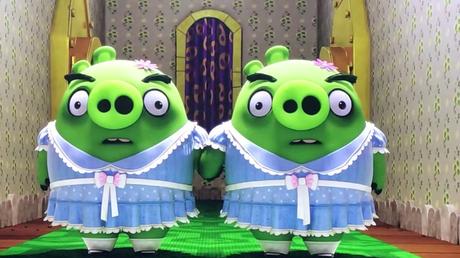
A direct sequel to The Shining and adaptation of King's sequel book did arrive in cinemas in 2019. Doctor Sleep is an excellent movie, with horror powerhouse Mike Flanagan adding his own style to the story while paying homage to the original. Unfortunately the movie did very poorly, with the first question that appears on a Google search being 'is Doctor Sleep worth watching?' In spite of the positive critical reaction to the movie it made little to no impact at the box office. It could, in part, be a reaction to the cheapening of the property through recent parodies, spoofs and homages.
To bring things back around to the original point, what is the value of The Shining as a piece of media art? You're not going to find many people who deny that it isn't a landmark in slow-burn, disturbing horror, and you can't deny the cultural impact. We're left with a movie who's most distinct imagery has been repeated and repeated and parodied and meddled with, leaving few surprises left for new viewers. It's great seeing how pop culture can spread and leave an imprint outside of its own story, but there's always the risk that the public will become exhausted and bored with the repetition. Perhaps if you're only familiar with The Shining through parodies and Ready Player One, it might be time to check it out and see why it became iconic.
